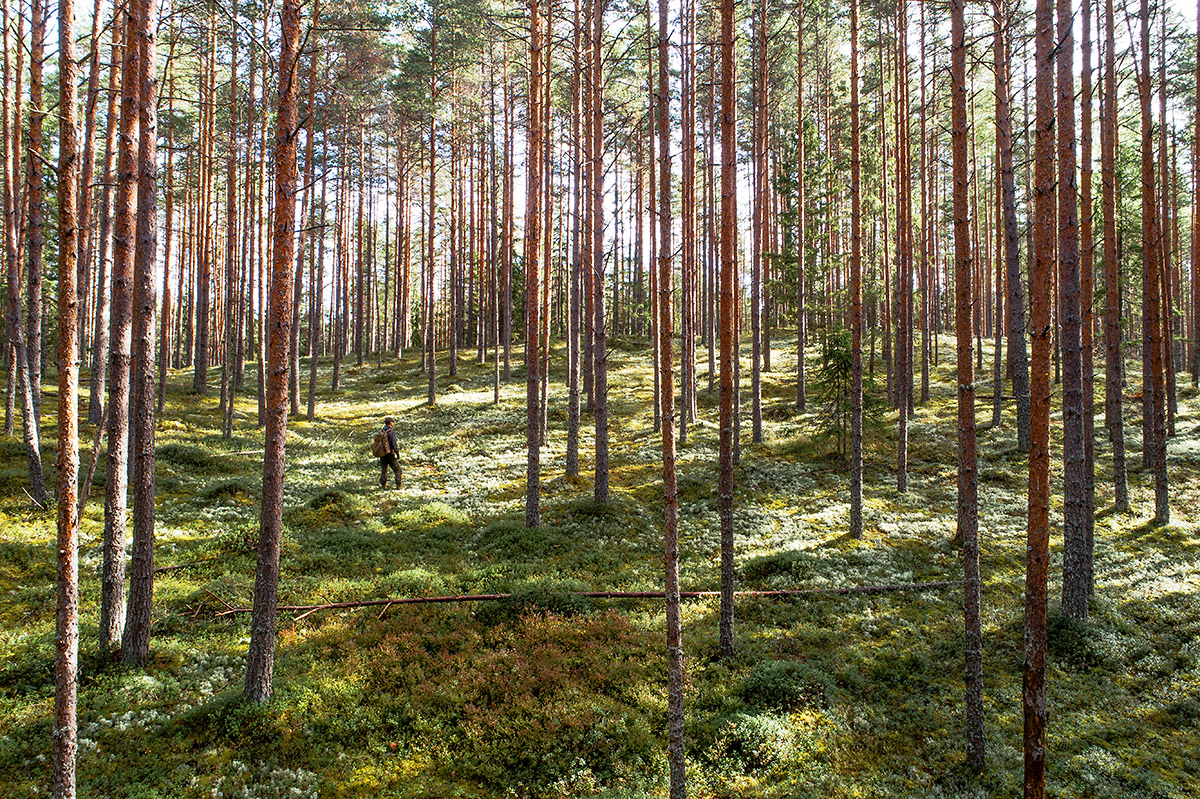Human well-being requires not only material values, but also health and a clean and pleasant living environment
The forest offers people a number of benefits, some of which (such as the amount of wood or the amount of mushrooms, berries, and medicinal plants harvested) are easily measurable. However, the value of the forest as a recreational place is difficult to measure in money.

Human well-being depends not only on material values, but also on health and a clean and pleasant living environment. In this context, we are talking today about ecosystem services, i.e. the benefits of nature that support human well-being. This includes cultural services, including recreational services. The forest offers aesthetic and spiritual pleasure as benefits that support human well-being, and is a place of relaxation and a source of new knowledge.
The picking of berries, mushrooms, and medicinal plants from the forest has been a tradition since ancient times. During the Soviet era, this activity became so widespread that no-go periods were introduced to ensure that raw berries were not picked before ripening [1]. Even today, picking the gifts of the forest continues to be popular, and Statistics Estonia also collects data on how many wild berries, mushrooms, nuts, or other natural materials people pick from forests.
Forests are popular places for sports and hiking activities. There are many opportunities for this in Estonia – there are study and hiking trails as well as beautiful places for walking. The State Forest Management Centre (RMK) offers many opportunities to hike on maintained hiking trails, including to rent huts. The Environmental Board, RMK, and others offer the opportunity to take part in study trips or study programmes and get to know nature better with the help of a competent instructor.
The binding element of RMK’s infrastructure is the three branches of the RMK hiking trail – the 372 km Oandu-Aegviidu-Ikla hiking trail (opened in 2012), the 820 km Peraküla-Aegviidu-Ähijärve hiking trail (opened in 2015), and the 614 km Penijõe-Aegviidu-Kauksi hiking trail (opened in 2018) [2]. The visiting infrastructure managed by the RMK includes 3,100 km of various nature hiking and study trails, which are equipped with information boards introducing natural values and contain instructions for behaving in nature. On the RMK’s website https://www.loodusegakoos.ee/en, it is possible to search for information on hiking trails, nature trails, observation towers, recreation areas, camping and campfire sites, and other information about nature; the website on protected areas provides an overview of larger protected areas and what is happening there. The mobile application RMK Loodusega koos (RMK with Nature) is also helpful for those who travel in nature.
Last modified: 05.11.2021
_____________________________________
[1] https://loodusegakoos.ee/puuri-uuri/metsanduse-ajalugu
[2] https://www.loodusegakoos.ee/